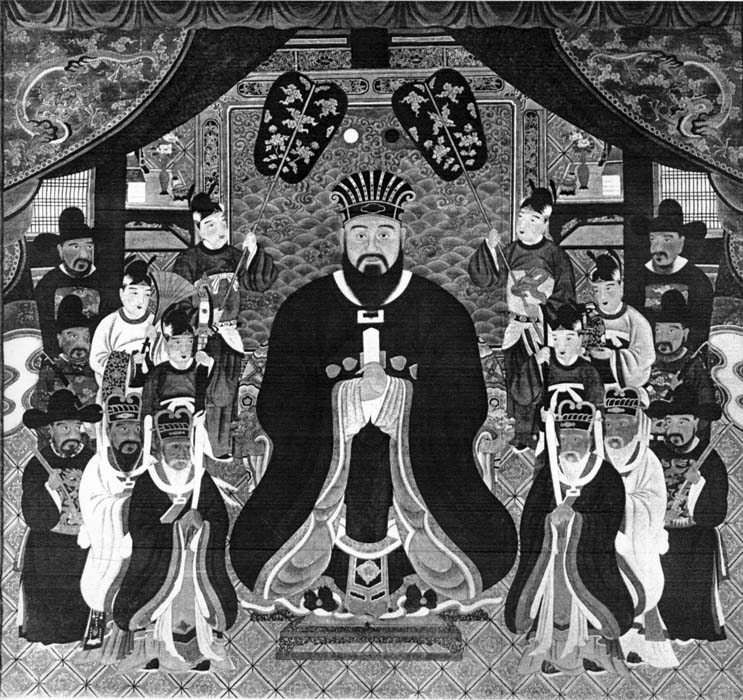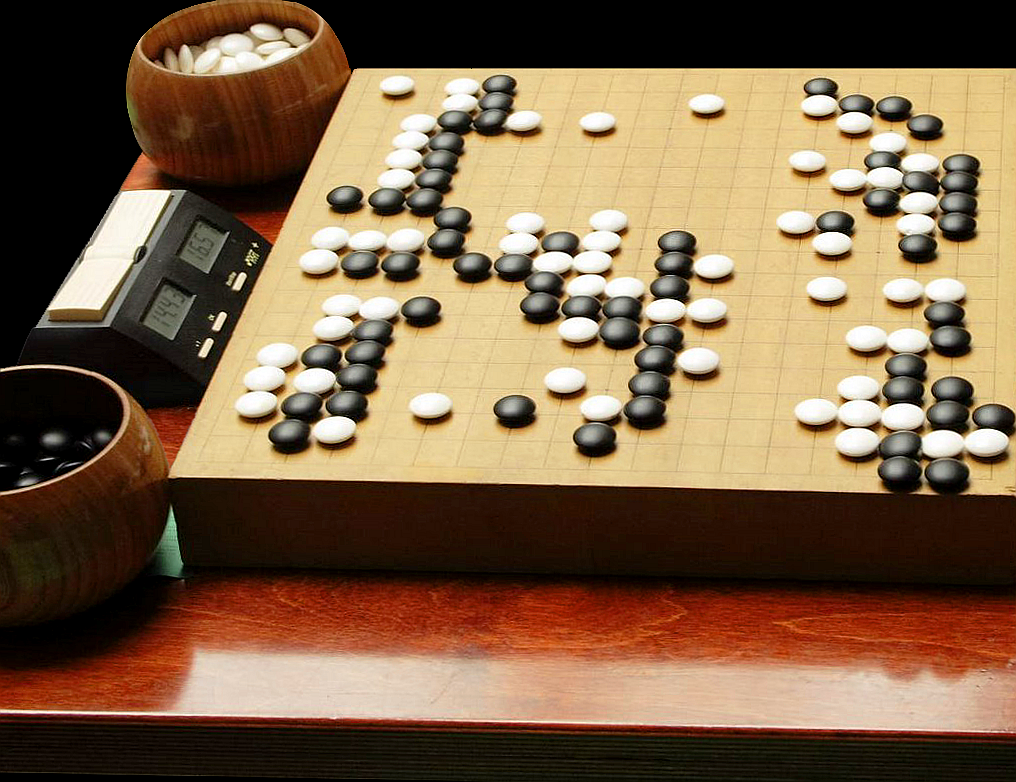|
Unsū
, is the most advanced kata found in the Shotokan, Shito-Ryu and Wado-Ryu karate styles and is generally taught to karateka at the 3rd to 4th Dan. It contains many intricate hand techniques, such as the ippon-nukite (one finger strike) in the opening sequence. Unsu also contains a 360-degree spinning double-kick with a double-leg take down at the same time, landing on the floor face-down before continuing. Because of this, it is a very common kata in tournaments and seen as method of testing the competitors knowledge, spirit and skill. Per Bruce Clayton in his book, ''Shotokan's Secret'', Unsu was created by Seisho Arakaki sometime around 1860-1870. Arakaki was a Japanese and Chinese language interpreter to the Shuri court, and a master of monk fist and white crane styles. It is somewhat a condensation of other katas (e.g., Bassai, Kanku, Jion, Empi, Jitte and Gankaku), hence it is essential to have mastered these before practicing Unsu. The movement, Unsu, or hands in ... [...More Info...] [...Related Items...] OR: [Wikipedia] [Google] [Baidu] |
Arakaki Seishō
was a prominent Okinawan martial artist and master of Tōde who influenced the development of several major karate styles.Sato, S. (''c.'' 2005)Seisho Aragaki Retrieved on 17 March 2010. (''c.'' 2006). Retrieved on 17 March 2010. (24 January 2008). Retrieved on 17 March 2010. He was known by many other names, including Aragaki Tsuji Pechin Seisho.McCarthy, P. (1997): ''The Bible of Karate Bubishi'' (3rd ed., p. 36). Boston, MA: Tuttle Publishing. () Life and martial arts Arakaki was born in 1840 in either , on |
Kata
''Kata'' is a Japanese word ( 型 or 形) meaning "form". It refers to a detailed choreographed pattern of martial arts movements. It can also be reviewed within groups and in unison when training. It is practiced in Japanese martial arts as a way to memorize and perfect the movements being executed. Korean martial arts with Japanese influence ( hapkido, Tang Soo Do) use the derived term '' hyeong'' (hanja: 形) and also the term ''pumsae'' (hanja: 品勢 hangeul: 품새). Kata are also used in many traditional Japanese arts such as theatre forms like kabuki and schools of tea ceremony ('' chadō''), but are most commonly known in the martial arts. Kata are used by most Japanese and Okinawan martial arts, such as iaido, judo, kendo, kenpo, and karate. Background Kata originally were teaching and training methods by which successful combat techniques were preserved and passed on. Practicing kata allowed a company of persons to engage in a struggle using a syste ... [...More Info...] [...Related Items...] OR: [Wikipedia] [Google] [Baidu] |
Shotokan
is a style of karate, developed from various martial arts by Gichin Funakoshi (1868–1957) and his son Gigo (Yoshitaka) Funakoshi (1906–1945). Gichin Funakoshi was born in Okinawa and is widely credited with popularizing "karate do" through a series of public demonstrations, and by promoting the development of university karate clubs, including those at Keio, Waseda, Hitotsubashi (Shodai), Takushoku, Chuo, Gakushuin, and Hosei. Funakoshi had many students at the university clubs and outside dojos, who continued to teach karate after his death in 1957. However, internal disagreements (in particular the notion that competition is contrary to the essence of karate) led to the creation of different organisations—including an initial split between the Japan Karate Association (headed by Masatoshi Nakayama) and the Shotokai (headed by Motonobu Hironishi and Shigeru Egami), followed by many others—so that today there is no single "Shotokan school", although they a ... [...More Info...] [...Related Items...] OR: [Wikipedia] [Google] [Baidu] |
Karate
(; ; Okinawan language, Okinawan pronunciation: ), also , is a martial arts, martial art developed in the Ryukyu Kingdom. It developed from the Okinawan martial arts, indigenous Ryukyuan martial arts (called , "hand"; ''tī'' in Okinawan) under the influence of Chinese martial arts. While modern karate is primarily a striking art that uses punches and kicks, traditional karate training also employs Throw (grappling), throwing and joint locking techniques. A karate practitioner is called a . Beginning in the 1300s, early Chinese martial arts, Chinese martial artists brought their techniques to Okinawa. Despite the Ryukyu Kingdom being turned into a puppet state by Japanese samurai in 1609, after the Invasion of Ryukyu, its cultural ties to China remained strong. Since Ryukyuans were banned from carrying swords under samurai rule, groups of young aristocrats created unarmed combat methods as a form of resistance, combining Chinese and local styles of martial arts. Training emph ... [...More Info...] [...Related Items...] OR: [Wikipedia] [Google] [Baidu] |
Karateka
(; ; Okinawan pronunciation: ), also , is a martial art developed in the Ryukyu Kingdom. It developed from the indigenous Ryukyuan martial arts (called , "hand"; ''tī'' in Okinawan) under the influence of Chinese martial arts. While modern karate is primarily a striking art that uses punches and kicks, traditional karate training also employs throwing and joint locking techniques. A karate practitioner is called a . Beginning in the 1300s, early Chinese martial artists brought their techniques to Okinawa. Despite the Ryukyu Kingdom being turned into a puppet state by Japanese samurai in 1609, after the Invasion of Ryukyu, its cultural ties to China remained strong. Since Ryukyuans were banned from carrying swords under samurai rule, groups of young aristocrats created unarmed combat methods as a form of resistance, combining Chinese and local styles of martial arts. Training emphasized self-discipline. This blend of martial arts became known as kara-te , which translates ... [...More Info...] [...Related Items...] OR: [Wikipedia] [Google] [Baidu] |
Dan (rank)
The ranking system is used by many Japanese, Okinawan, Korean, and other martial arts organizations to indicate the level of a person's ability within a given system. Used as a ranking system to quantify skill level in a specific domain, it was originally used at a Go (game), Go school during the Edo period. It is now also used in most modern Japanese fine and martial arts. Martial arts writer Takao Nakaya claims that this dan system was first applied to martial arts in Japan by Kanō Jigorō (1860–1938), the founder of judo, in 1883, and later introduced to other East Asian countries. In gendai budo, modern Japanese martial arts, holders of dan ranks often wear a black belt (martial arts), black belt; those of higher rank may also wear either red-and-white or Red belt (martial arts), red belts depending on the style. Dan ranks are also given for strategic board games such as Go, Japanese chess (''shōgi''), and renju, as well as for other arts such as the Japanese tea cerem ... [...More Info...] [...Related Items...] OR: [Wikipedia] [Google] [Baidu] |
Ryukyu Kingdom
The Ryukyu Kingdom was a kingdom in the Ryukyu Islands from 1429 to 1879. It was ruled as a Tributary system of China, tributary state of Ming dynasty, imperial Ming China by the King of Ryukyu, Ryukyuan monarchy, who unified Okinawa Island to end the Sanzan period, and extended the kingdom to the Amami Islands and Sakishima Islands. The Ryukyu Kingdom played a central role in the maritime history, maritime trade networks of medieval East Asia and Southeast Asia despite its small size. The Ryukyu Kingdom became a vassal state of the Satsuma Domain of Japan after the invasion of Ryukyu in 1609 but retained ''de jure'' independence until it was transformed into the Ryukyu Domain by the Empire of Japan in 1872. The Ryukyu Kingdom was Ryukyu Disposition, formally annexed and dissolved by Japan in 1879 to form Okinawa Prefecture, and the Ryukyuan monarchy was integrated into the new Kazoku, Japanese nobility. History Origins of the Kingdom In the 14th century small domains s ... [...More Info...] [...Related Items...] OR: [Wikipedia] [Google] [Baidu] |
White Crane Style
Fujian White Crane, also known as White Crane Boxing () is a Southern Chinese martial art that originated in Yongchun County, Fujian () province. According to oral tradition, the style was developed by Fang Qiniang (方七娘; Amoy Min Nan: Hng Chhit-niâ), a female martial artist. It is associated with traditional fighting techniques, including long range, but is most similar to close-quarter or hand-to-hand combat. It is most recognizable by the way the fighter imitates a bird's pecking or flapping of wings. While some white crane styles make use of traditional weapons, others have discontinued the use of weaponry. Fujian White Crane descends in part from Shaolin Boxing and imitates characteristics of the white crane. This system is separate though related to Lohan Quan (Fujian Shaolin). The entire system of fighting was developed from observing the crane's movements, methods of attack and spirit, and may have evolved from the southern Shaolin animal styles. There is no si ... [...More Info...] [...Related Items...] OR: [Wikipedia] [Google] [Baidu] |
Passai
''Passai'' (katakana パッサイ), also ''Bassai'' (バッサイ), is a karate kata. According to Motobu Chōki, the ''Passai'' kata was one of the three most practiced kata in Okinawa, along with '' Naihanchi'' and ''Kūsankū'', but was already lost in China at the time. Originally there were two types of ''Passai'', ''Dai'' (, ) and ''Shō'' (, ), but today there are many different variations depending on the school. In 1935, Gichin Funakoshi changed the name of the ''Passai Dai'' () to ''Bassai Shodan'' (, now ''Bassai Dai'') to reflect the Japanese pronunciation and Kanji, and the pronunciation ''Bassai'' was subsequently popularized on the Japanese mainland. The Passai kata is practiced today in various Korean martial arts besides karate, such as Taekwondo, Tang Soo Do, and Soo Bahk Do. In Korean, the kata have several names: ''Bassahee'', ''Bal Se'', ''Pal Che'', ''Palsek'', ''Bal Sae'', ''Ba Sa Hee'', and ''Bal Sak''. The kata's focus is the idea of changing disadvantage ... [...More Info...] [...Related Items...] OR: [Wikipedia] [Google] [Baidu] |
Jion Kata Group
Ji'in, Jion, and Jitte form a group of kata used in Shotokan and other karate styles, beginning with the same characteristic kamae of the left hand covering the right, which apparently has roots in ancient Chinese boxing. Their origin is thought to be from the Tomari-te school, however Hirokazu Kanazawa speculates that the Jion kata were devised in the Jionji 慈恩寺, the Jion temple, where martial arts were famously practiced. From there, Kanazawa believes the Jion kata were spread into the Tomari region. Ji'in Ji'in 慈陰 ("Temple Ground") is important for the execution of many simultaneous techniques and the often-repeated stances, enabling swift changes of direction while maintaining balance, power and steps of equal length. It has, however, been removed from the Japan Karate Association teaching and grading syllabus. Jion Jion 慈恩 ("Temple Sound" ) is a representative kata in the Shotokan system because of the importance of the perfection of the basic stances it conta ... [...More Info...] [...Related Items...] OR: [Wikipedia] [Google] [Baidu] |




